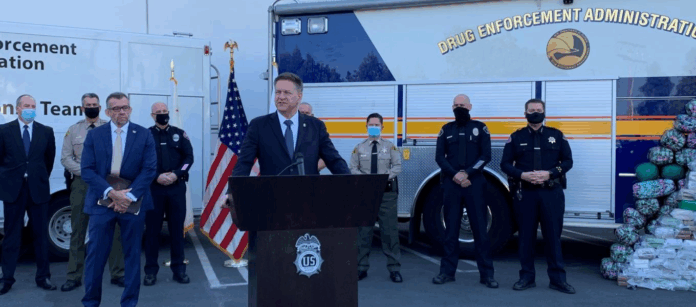The U.S. Drug Enforcement Administration today announced the release of the 2025 National Drug Threat Assessment, DEA’s comprehensive review of the threats posed to the United States by deadly illicit drugs and the violent domestic and international drug trafficking organisations responsible for producing and trafficking the drugs poisoning our communities.
For more than a decade, DEA’s NDTA has been an integral resource for informing drug policies and laws. It remains a trusted resource for law enforcement agencies, policymakers, community leaders, and prevention and treatment specialists, while also serving as a critical tool to inform and educate the public.
“This year’s report indicates progress in the fight against fentanyl and also outlines the increasing challenges we face with the changing landscape of the synthetic drug crisis. The adulterating of fentanyl with highly potent, dangerous chemicals reminds us that this fight is far from over,” said DEA Acting Administrator Robert Murphy.
In addition to highlighting current trends and emerging threats, this year’s NDTA includes overviews of the cartels and criminal organizations that were designated as Foreign Terrorist Organizations and Specially Designated Global Terrorists, including the Sinaloa Cartel, Jalisco New Generation Cartel, Northeast Cartel, the New Michoacán Family, Gulf Cartel, United Cartels, Tren de Aragua, and Mara Salvatrucha.
Drug overdose deaths decreased by more than 20% in 2024. October 2024 was the eleventh consecutive month in which the CDC reported a reduction in drug-related deaths.
This is positive momentum in this fight to save lives; however, with more than 80,000 Americans still dying from drug poisonings and overdose deaths, the synthetic drug threat remains grave.
DEA laboratories are reporting a downward trend in fentanyl purity. This should not be mistaken for street-level fentanyl being any less dangerous. While purity levels are decreasing, the mixing of fentanyl with animal tranquillisers and other synthetic opioids is on the rise, which results in people not knowing the exact composition of what they are consuming or selling.
The mixing of illicit substances, known as drug cocktails, is becoming more common.
Recent data from the National Forensic Laboratory Information System (NFLIS) indicated that one in four submissions of cocaine and one in eight submissions of methamphetamine also included fentanyl. This is another indication that the drug landscape is as dangerous as ever.
Veterinary tranquilliser xylazine remains the top adulterant found in fentanyl powder; however, a more powerful veterinary anaesthetic, medetomidine, has emerged in the fentanyl supply – a dangerous development in the fight against fentanyl.
More than four million youth and young adults (ages 12-20) reported vaping marijuana in the past year.
Chinese transnational criminal organisations dominate the domestic cultivation and distribution of marijuana, with most grow sites located in states where the cannabis industry is “legal”.
These Chinese TCOs are producing the most potent form of marijuana in the history of drug trafficking, with a THC content averaging 25-30%.




